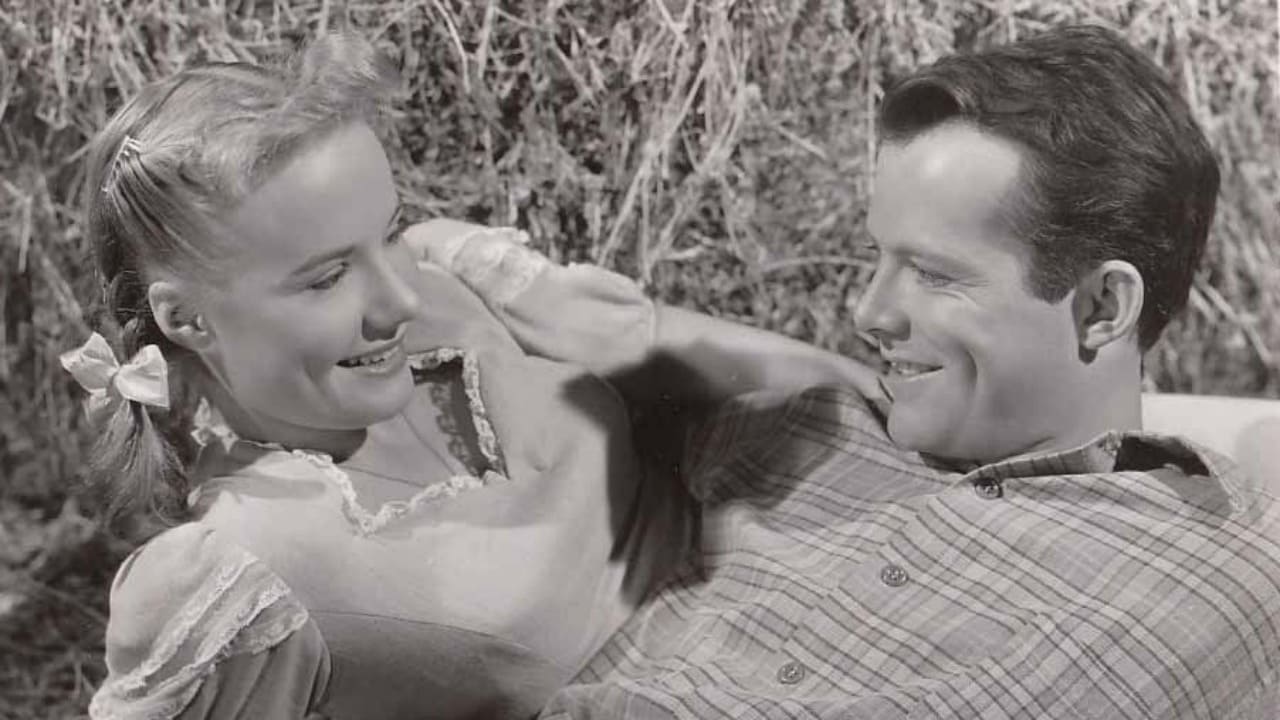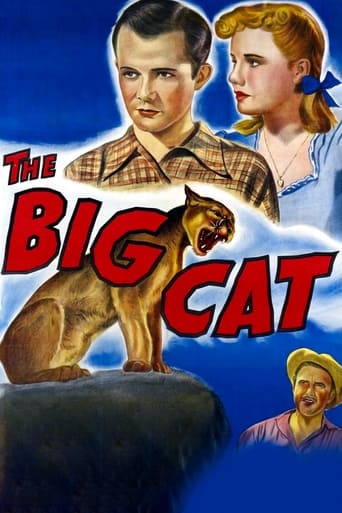

Director: PHIL KARLSON. Screenplay: Morton Grant, Dorothy Yost. Story: Morton Grant. Photographed in Technicolor by W. Howard Greene. Technicolor color consultant: Natalie Kalmus. Film editor: Harvey Manger. Music composed by Paul Sawtell and directed by Irving Friedman. 2nd unit director: Noel Smith. Associate Technicolor color consultant: Francis C. Cugat. Special effects: Roy W. Seawright. Art director: Frank Durlauf. Set decorations: Ben W. Bone, Armor Marlowe. Production manager: James T. Vaughn. Assistant director: Ridgeway Callow. 2nd assistant director: William Nolte. Hair styles: Joan St Oegger, Gwen Van Upp. Make-up: Ern Westmore, Jack Pierce. Sound technician: Victor Appel. Producer: William Moss.William Moss Pictures, Inc. Copyright 19 May 1949 by Pathe Industries, Inc. Released in the U.S.A. through Eagle-Lion, in the U.K. through G.F.D. U.S. release: April 1949. U.K. release: 26 December 1949. Australian release by J. Arthur Rank through British Empire Films, Sydney release at the Capitol: 24 March 1951 (1 week only). Australian length: 7,009 feet (78 minutes). U.S. length: 76 minutes. U.K. length: 6,721 feet (74½ minutes).SYNOPSIS: 1932 — depression and drought in the Rocky Mountain country — and a killer cougar!COMMENT: Eagle-Lion films often enjoyed a perpetual half-life, hanging on through independent exchanges and the punishment of amateur projectionists, until the prints were so patched and shredded they literally fell apart. Very few of the movies in the independents' catalogs boasted any sort of color, let alone Technicolor, the acknowledged king of the rainbow, against which all other systems were regarded as second-rate; so The Big Cat was pretty near top of the popularity poll with schools, clubs and home cinemas that had no access to the output of Hollywood's major studios.Superbly photographed on natural locations in the Rocky Mountain country of Utah, capably directed and acted, "The Big Cat" has enough predictable action to satisfy the average fan. What it doesn't have is an original story. Once the characters are established — and they are a conventional enough lot — it is possible to stay three or four jumps ahead of the plot. But when you're looking at color for the first time on the kitchen wall or the roll-up screen, it's the color that counts — and Duke Greene, a veteran Technicolor cameraman knows his palettes — nothing else really matters.
... View MoreSet in Utah during 1933's drought and depression, this is the story of a city slicker going to the wilderness and looking up a friend of his mothers. He ends up getting involved with the daughter of one of the ranchers and hunting for a big mountain lion that has been attacking live stock and people. Dully made by rote this is a pot boiler tale set in the modern west that is a good cure for insomnia. To be certain the film has some stunning photography of the wilds of Utah, but the plot is so over blown and the acting, outside of Preston Foster and Forrest Tucker is merely adequate, making for a film that's best used as a sleep aide. To be honest I struggled to get through this film and found that toward the end I had reached for the remote of the DVD player. I'd take a pass.
... View MoreYoung Lon McCallister has trouble making ends meet in depression-era Philadelphia, so he returns to his dead mother's rural hometown. There, he becomes involved with the town folk's soap opera past, and catches the eye of Peggy Ann Garner. Due to drought, a menacing cougar is on the scene, making the outdoors very dangerous for the movie's characters...There is a lot of fighting, with and without the cougar; but, that's not the film's most interesting feature. More interesting is that the movie features a few "child stars" past their "Hollywood Prime." On hand: Lon McCallister, from 1943's "Stage Door Canteen" and others, Peggy Ann Garner from 1945's "A Tree Grows in Brooklyn" and others, Skip Homeier from 1944's "Tomorrow, the World" and others, and Gene Reynolds from 1938's "Boys Town" and others. Mr. Reynolds won huge fame later, as a producer ("M*A*S*H")."The Big Cat" and the family dog win big acting honors. **** The Big Cat (4/49) Phil Karlson ~ Lon McCallister, Peggy Ann Garner, Preston Foster, Forrest Tucker
... View MoreHi, Everyone, Lon McCallister shines as a newbie to the Utah drought stricken badlands of the 1930s. He has left his Eastern digs to get away from the Depression. When he meets Peggy Ann Garner he wishes he could get back to the squalor he left. Her jawbone never stops when she is on screen.This movie is not great by any means, but it has some good moments. There are only a few human actors in this drama. The Big Cat does a good job of hitting his marks and growling. The best scenes by far are the fights. They seem real. Not just the human, but the animal fights are well done for 1949 when George Lucas was not available for a light show or animation.In one fight scene between Preston Foster and Forrest Tucker you can almost feel the pain. Lon McCallister manages to get into a fight with his two cousins and they don't hold back. The cat has a scrape or two with a beautiful white dog and all of it is photographed to show how rough it is to survive in an environment with limited water and food and money sources.Lon had a true screen presence that did not last long enough. If they quit using him because of his short stature, it was a loss to the fans. Skip Homeier is good as a rotten kid. Forrest Tucker is easy to dislike and he carries off the villain honors well here. Preston Foster does an excellent job of being a less than likable hero.The best acting here is by Sara Haden as the mom of Peggy Ann Garner. She reminds me of my aunts of the 1950s. The worst singing in movie history might be the acappella ditty offered up by Irving Bacon as he approaches Lon McCallister who is walking down the road with his suitcase.Lon McCallister and Skip Homeier both should have had long careers similar to Clint Eastwood and Lee Van Cleef. They had a good hero/villain chemistry. Somehow it just didn't happen.When you watch this and see Forrest Tucker in 1949, you are seeing F Troop's Sgt. O'Rourke just 16 years before he became known for his comedic fights.I recommend Stage Door Canteen with Lon McCallister (5'6") and Sunset Carson (6'4"). You will see the same boyish charm of McCallister 6 years before The Big Cat was made.Tom Willett
... View More